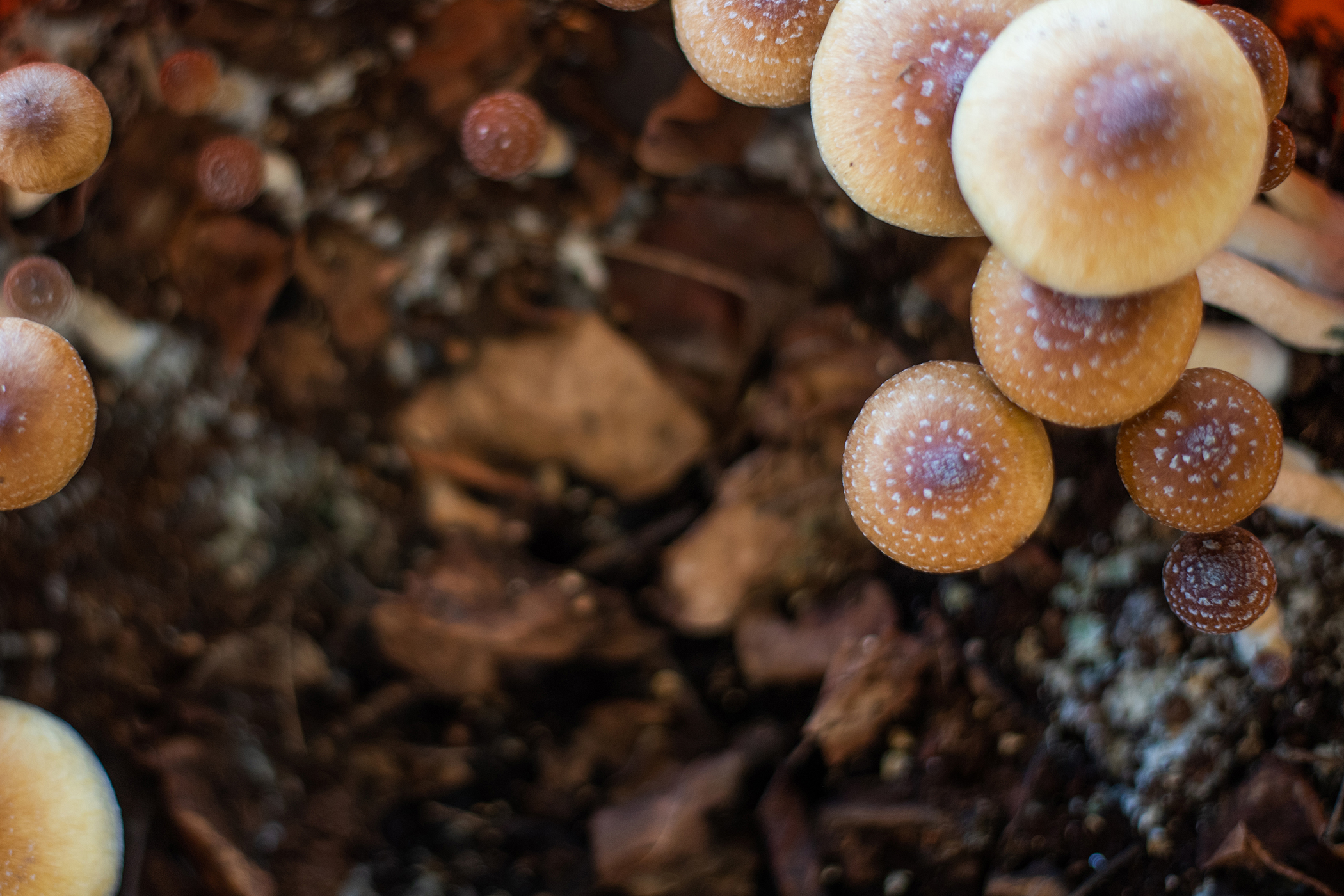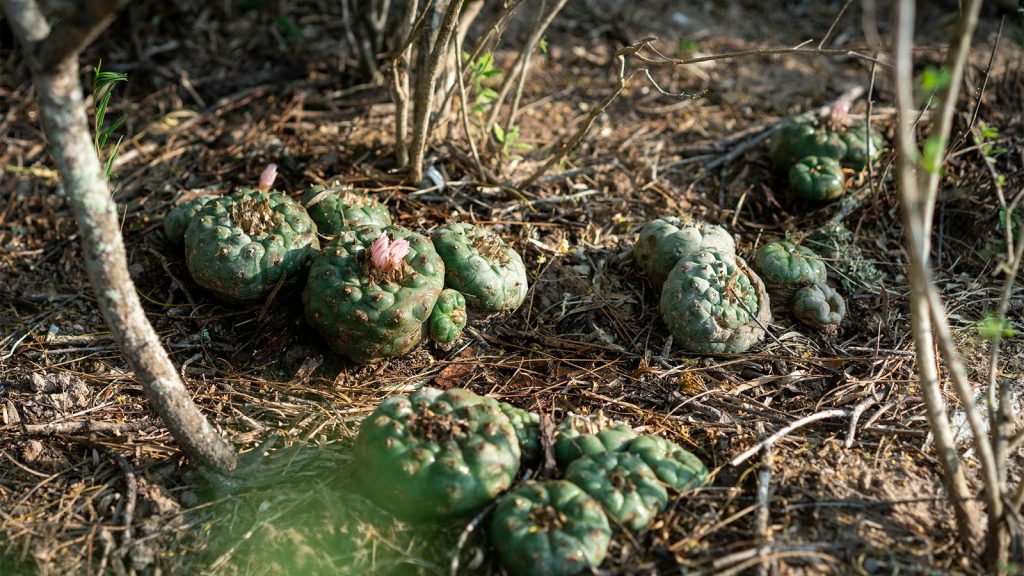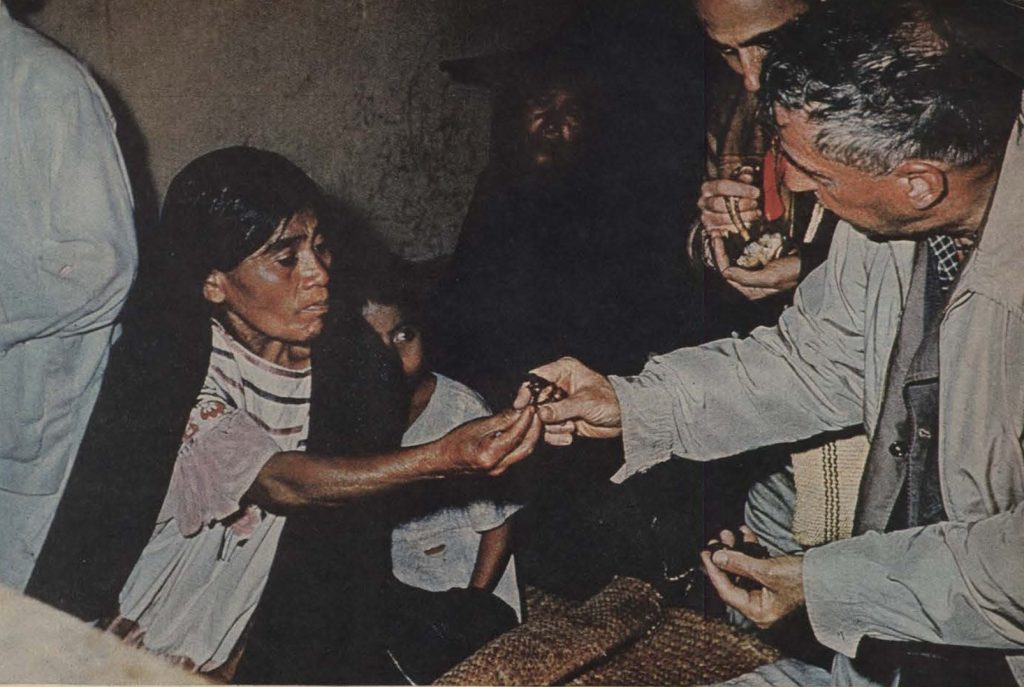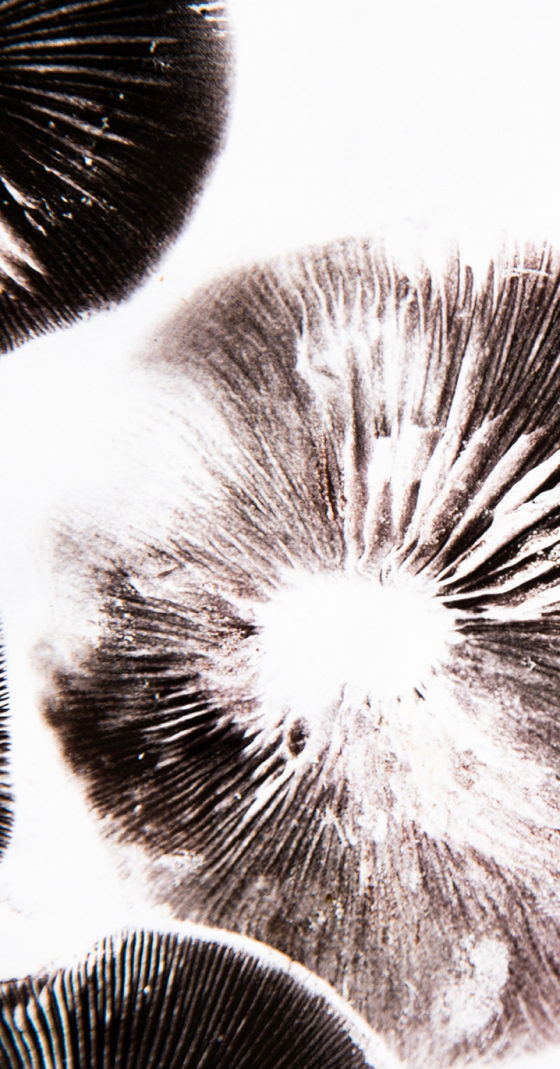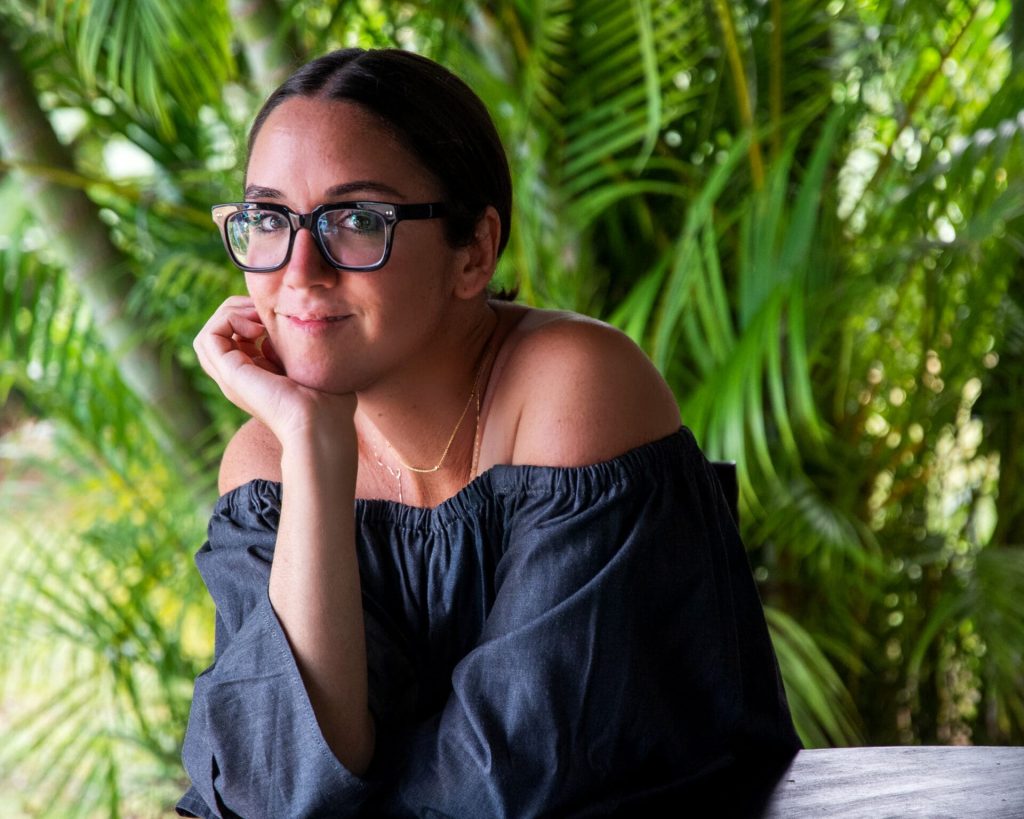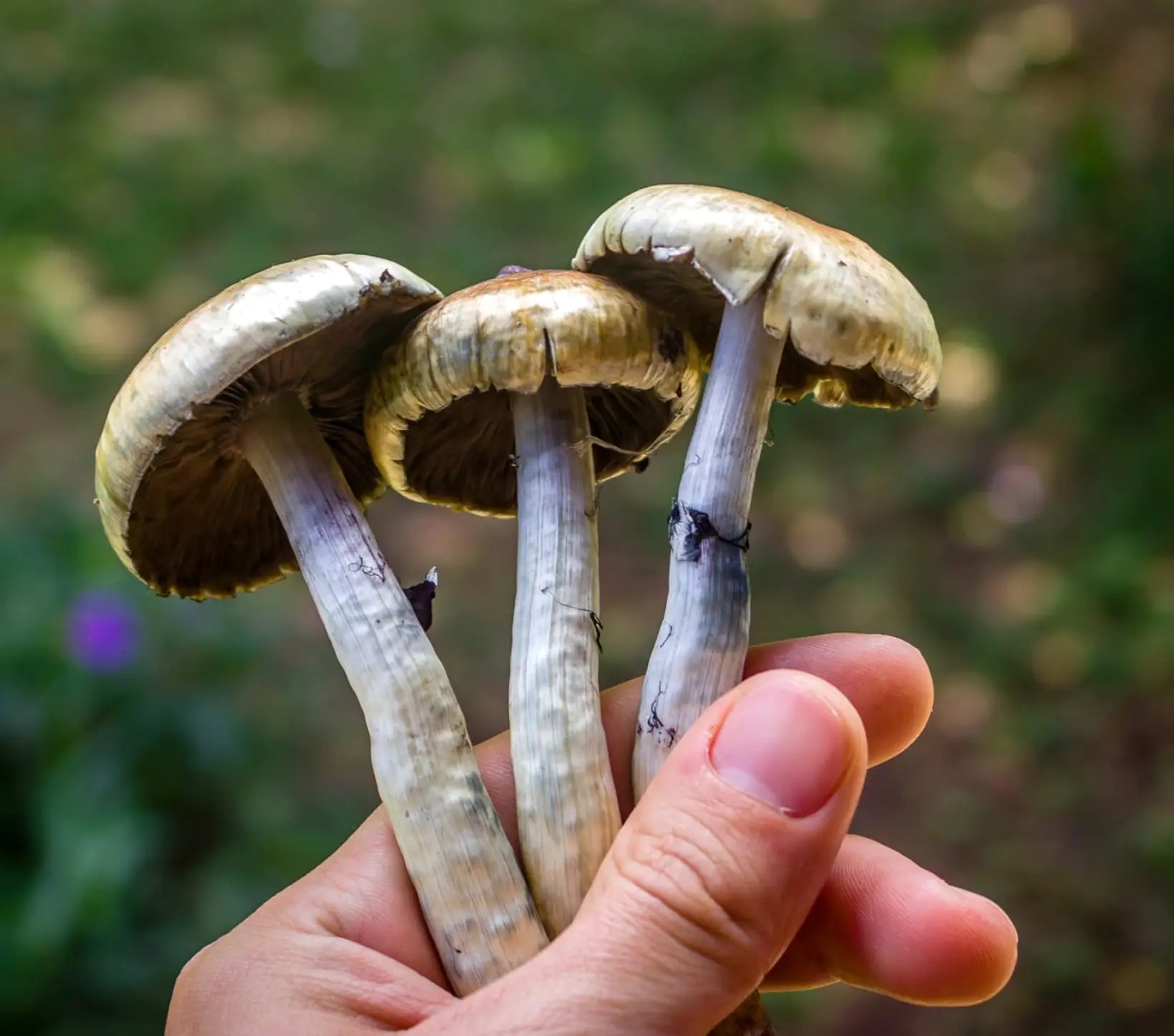
Mescaline vs Psilocybin: Key Differences Explained
Explore the key differences between mescaline and psilocybin, from origin and chemistry to experience, duration, and potential therapeutic benefits.
Published on: October 15, 2025
Mescaline vs Psilocybin: The Complete Overview
There are many varieties of psychedelics. While we often refer to the ‘psychedelic experience’, it’s important to note that different psychedelics can offer different effects. Understanding these differences – such as between mescaline vs psilocybin – is crucial to preparing for a journey with a particular psychedelic.
Mescaline and psilocybin are two common natural psychedelics used at psychedelic retreats. Psilocybin (found in ‘magic mushrooms’) is more well-known and studied. However, many people will also be familiar with mescaline through Aldous Huxley’s book The Doors of Perception (1954), in which the author describes his profound experience with the compound.
In this article, we’ll be doing a deep dive into mescaline vs psilocybin. Through this psychedelic comparison, we’ll cover cultural use, pharmacological distinctions, mescaline’s effects, psilocybin’s effects, and research on these two psychedelic compounds.
Mescaline vs. Psilocybin: Natural Psychedelics Compared
Both mescaline and psilocybin are natural psychedelics. This means they occur in nature – mescaline is found in a few species of cactus, while psilocybin is found in many species of mushrooms. Mescaline and psilocybin are also classic serotonergic psychedelics. They primarily induce psychedelic effects through their action at serotonin 5-HT2A receptors. LSD and DMT are two other examples of classic serotonergic psychedelics.
Mescaline and psilocybin have a long history of traditional use. While psilocybin is more in the limelight nowadays for its use in psilocybin-assisted therapy, there is promising research on mescaline’s therapeutic application as well. There are several differences between the traditional use of mescaline and psilocybin and their use in clinical settings.
Let’s begin by describing the Indigenous context in which these natural psychedelics are used.
Mescaline vs. Psilocybin Origins: Natural Sources, Indigenous Use & History
As a natural psychedelic, mescaline is most commonly found in the following species of cacti:
Lophophora williamsii (Peyote)
Used ceremonially by the Maya and Aztecs, and traditionally used by several Native American tribes, as well as the Native American Church (NAC), for religious purposes and healing. Indigenous use dates back to (at least) 3780–3660 BC. This makes mescaline, as far as we know, the psychedelic with the longest history of use. Peyote is primarily found in the deserts of northern Mexico and southern Texas.
Echinopsis pachanoi/Trichocereus pachanoi (San Pedro)
Used for healing and divination in the Andes Mountains region for over 3,000 years. The ‘stela of the cactus bearer’, a monolith found at the archaeological site Chavín de Huántar in Peru, shows evidence of its use by the Chavín people of ancient Peru. San Pedro is native to Ecuador, Peru, and Colombia, although you can also find it in Argentina, Bolivia, Chile, and Venezuela. While widely used as an ornamental cactus, it is also offered to psychedelic retreat attendees in South America for its unique psychedelic effects. San Pedro is traditionally known as ‘Huachuma’.
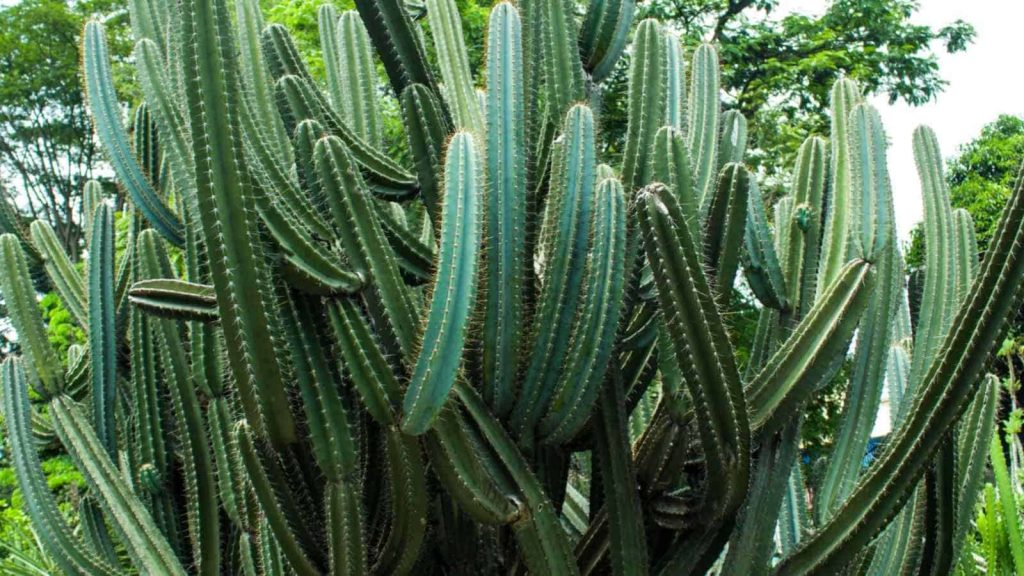
The use of psilocybin mushrooms is also thousands of years old. ‘Mushroom stones’, used in a ritualistic context in Mesoamerica, date back to 3000 BC. F.J. Carod-Artal writes, “Religious practices with sacred mushrooms extended from the Valley of Mexico to the rest of Central America, and they are thought to be at least 3500 years old. The Maya consumed k’aizalaj Okox (Psilocybe cubensis), known to the Aztecs as teonanácatl. These mushrooms were also consumed by the Huastec, Totonac, Mazatec, and Mixtec peoples.” (“Teonanácatl” means “flesh of the gods.”)
Psilocybin is contained in more than 300 species of mushrooms, and it is found worldwide. The largest and most well-known genus it is found is Psilocybe, but some species of Panaeolus and Gymnopilus also contain this natural psychedelic. Ceremonial ingestion of psilocybin mushrooms has continued throughout history. Amateur mycologist R. Gordon Wasson famously covered their use by the Mazatec people of Oaxaca, Mexico, documenting a ceremony led by curandera (healer) Maria Sabina.
Mescaline vs Psilocybin: Chemical Structure and How They Work in the Brain
The primary pharmacological distinction between mescaline and psilocybin is that the former is a phenethylamine psychedelic, while psilocybin is a tryptamine psychedelic. This means they differ in their basic chemical structure. MDMA is also a phenethylamine and, as we’ll see in the next section, mescaline effects are sometimes quite similar to those of MDMA. Examples of other tryptamine psychedelics include DMT and ibogaine.
While mescaline and psilocybin belong to two different chemical classes of psychedelics, as we’ve seen, they still act on the 5-HT2A receptors in the brain. However, mescaline also acts on dopamine receptors (although not as strongly as it acts on serotonin receptors). Psilocybin, in contrast, has no direct affinity for dopamine receptors, although it does increase dopamine levels. Mescaline’s stimulation of dopamine receptors, as well as adrenaline receptors, helps explain some of its unique effects.
Another crucial pharmacological distinction between mescaline and psilocybin is that the latter is a prodrug. This means that psilocybin itself is not psychoactive. Rather, when you ingest psilocybin, in the form of mushrooms or in synthetic form, it converts to psilocin in the body. Technically, it is psilocin that affects receptors in the brain, not psilocybin. Mescaline, in contrast, is not a prodrug. It is this chemical, intact, which targets various receptors.
Mescaline vs Psilocybin: Key Differences in Experience
The pharmacological distinctions described above help to shed light on how the mescaline experience differs from the psilocybin experience. Both mescaline and psilocybin can induce classic psychedelic effects like perceptual distortions, insights, visions, emotional catharsis, and mystical experiences. However, to prepare for a mescaline or psilocybin experience, you should be aware of the unique effects that these natural psychedelics produce.
Mescaline Effects
Since mescaline is a phenethylamine, common mescaline effects include stimulation, physical euphoria, and more ‘heart-centered’ feelings like empathy. Like other phenethylamines, such as MDMA and 2C-B, the ‘headspace’ of the mescaline experience tends to be more lucid and straightforward to navigate than that of psilocybin. Challenging experiences may be less likely, but they can still occur. The mescaline experience also tends not to be as visual as the psilocybin experience. The nausea produced by mescaline tends to be more pronounced compared to psilocybin, even when taken in synthetic form. This means that an experience involving vomiting or other purgative effects is more likely to occur.
Psilocybin Effects
Since psilocybin is a tryptamine psychedelic like DMT and ayahuasca, it tends to be a more visually intense experience. The headspace of psilocybin is also more likely to be deeply introspective and mystical, featuring effects like ego dissolution, unity, ineffability, transcendence of time and space, and noetic experience (i.e., the feeling of gaining direct insight into profound truths). While psilocybin experiences are often described as having less of a physical component than mescaline, it can still be a highly somatic experience.
Mescaline vs. Psilocybin Duration & Onset: How Long They Last, Peak, Intensity
Duration
What makes the effect of mescaline unique is its duration. Journeys with mescaline typically last 12+ hours, making it one of the longer-acting psychedelics. Psilocybin experiences are much shorter, typically lasting anywhere from four to six hours.
Intensity
To reiterate, the visual effects of psilocybin may be more intense than those of mescaline. Nonetheless, at high enough doses, mescaline can produce powerful closed-eye visuals and visions. The psilocybin experience may feel like a more ‘intense’ journey overall, in terms of the thoughts, emotions, and psychological material that arises. The mental and emotional effects of mescaline may be more gentle.
Nonetheless, the ‘heart-centered’ emotions common to the mescaline experience – empathy, compassion, and love – can still be intense. In addition, as noted earlier, the physical side effects of mescaline – such as nausea and vomiting – may be more intense when ingesting mescaline compared to psilocybin. However, this is not to say that the psilocybin experience won’t have a noticeable somatic quality to it. Many users feel a ‘body load’ during the onset of effects, which may include a feeling of heaviness, warmth or chills, yawning, a tingling sensation, stomach discomfort, or nausea.
Onset of Effects
The onset of psilocybin effects is quicker than that of mescaline. After ingesting psilocybin, you can expect to experience the first effects within 20–40 minutes, with peak effects occurring at the 1–2 hour mark. Mescaline, on the other hand, has a longer onset, with effects generally occurring 30–90 minutes after ingestion. You can expect to experience the peak of mescaline effects at the 2–3 hour mark.
Therapeutic Research and Potential Benefits of Mescaline and Psilocybin
Mescaline was the earliest studied psychedelic. In the early 1900s, physicians self-administered the psychedelic and experienced an array of dazzling visual effects. In 1936, the German psychiatrist Erich Guttman, who was working at The Maudsley Hospital in London at the time, wanted to investigate the potential therapeutic effects of mescaline. After observing its effects in a number of participants, he concluded, “There is reason to suppose that patients in such a state may be very susceptible to psychotherapeutic influence.”
By the 1950s, it was used in schizophrenia research, as was LSD. However, following the discovery of LSD in 1943 by Swiss chemist Albert Hofmann, LSD overtook mescaline as the chemical of choice in psychedelic research.
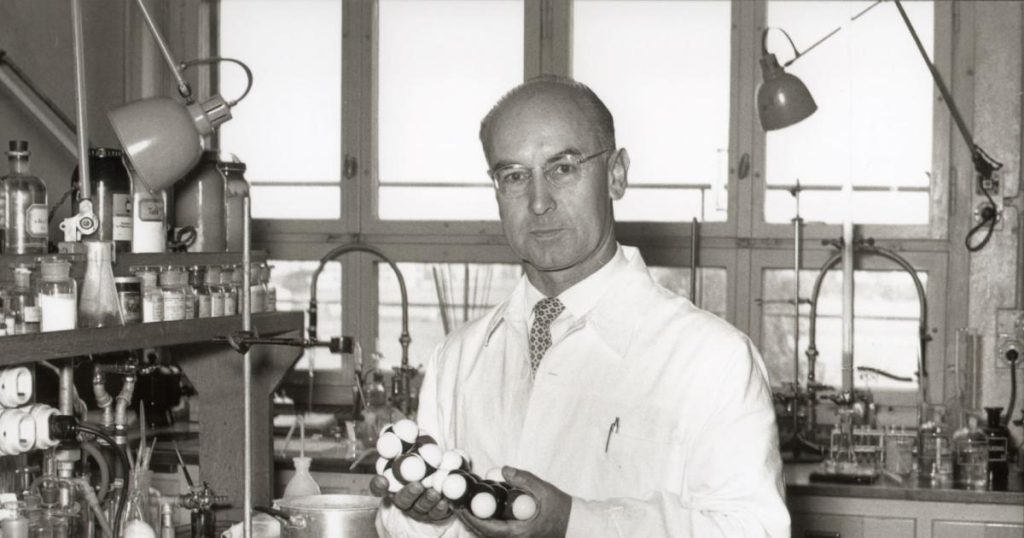
Much of the psychedelic research in the ‘psychedelic renaissance’ (beginning in the early 2000s) has involved psilocybin. This is because it carries less stigma than LSD and also because the experience is much shorter (LSD experiences last around 12 hours). This makes it easier for studies on psilocybin-assisted therapy to get funding approval. So far, we have evidence from psychedelic research that psilocybin is helpful in the treatment of:
- Depression
- Treatment-resistant depression
- PTSD
- Generalized anxiety
- Social anxiety
- OCD
- Eating disorders
- Gambling addiction
- Tobacco addiction
- End-of-life distress
However, the psychedelic renaissance has also seen a resurgence of psychedelic research involving mescaline. Journey Colab has studied the impact of mescaline-assisted therapy on alcohol use disorder (AUD), with promising results. Non-clinical psychedelic research (i.e., survey-based research) has also found that mescaline use is associated with reduced odds of experiencing psychological distress and suicidality. This also makes mescaline a promising tool in psychedelic-assisted therapy.
Of course, owing to the longer duration of mescaline, this would make mescaline-assisted psychotherapy more time-consuming than psilocybin-assisted therapy. From a commercial standpoint, this is one reason why psychedelic clinics would be more likely to opt for psilocybin, as it would require less staff time.
Many patients would also prefer a shorter treatment session, as this makes it more convenient and cheaper than a longer one. For similar reasons, it is more difficult to gain funding for research on mescaline, as it requires greater clinical resources. Researchers have also cited mescaline-related vomiting as a reason why trials on the compound would be uncommon.
Mescaline vs Psilocybin: Safety and Legal Considerations
Mescaline and psilocybin have similar safety profiles. Both are non-addictive and have very low toxicity. When taken as natural psychedelics, in the form of psychedelic cacti or mushrooms, it’s virtually impossible to overdose on them.
The main risks of both mescaline and psilocybin are mental health-related. It is generally recommended to avoid using mescaline or psilocybin if you have a personal or family history of psychosis or mania. Using mescaline and psilocybin can also result in challenging experiences (which may nonetheless lead to benefits), as well as extended difficulties (which outlast the psychedelic experience). Challenging experiences need to be carefully supported, and without that support, extended difficulties, such as psychological destabilization, can occur.
There can also be contraindications between the two psychedelics and various antidepressants or mood stabilizers
Mescaline-assisted therapy is not legally available, like psilocybin-assisted therapy is in a few countries and US jurisdictions. Nonetheless, the use of San Pedro at psychedelic retreats is still common, which makes this a promising option for those who want to use mescaline in a legal, supportive, and natural setting. You can legally use San Pedro in South America, and ceremonies are easy to find in Peru, Bolivia, and Ecuador. Use of the cactus is decriminalized in Portugal and Spain. Unlike psilocybin, mescaline is legal – in cactus form – as a plant medicine in the Andean countries and as a religious sacrament for NAC members. In South America and in the context of the NAC, mescaline tends to be consumed in a more ceremonial setting compared to psilocybin.
Legal psilocybin retreats are most popular in Jamaica and the Netherlands. Psilocybin is also legal for therapeutic purposes in the states of Oregon and Colorado, and its use is decriminalized in Portugal, Spain, and several US cities.
Choosing Between Mescaline and Psilocybin: Intention and Context
Based on this comparison of mescaline vs psilocybin, you should now have a better sense of which one most appeals to you.
Of course, you don’t have to choose one or the other. Many people benefit from working with both natural psychedelics. Both mescaline and psilocybin have something unique to offer. Nevertheless, some people find that, having tried both, one resonates more with them than the other. It’s also important to take geographic and legal circumstances into account.
Depending on where you live, you may find that it is more practical and affordable to have a psilocybin experience, and vice versa. Take note of your intentions, your mental and physical well-being, and life situation: this will help guide you to the psychedelic medicine that is right for you.
FAQs: Mescaline vs. Psilocybin (Effects, Duration, Safety, Legal Status)
What are mescaline and psilocybin, and how do they differ?
Mescaline and psilocybin are natural psychedelics with a long history of use. Mescaline is a phenethylamine psychedelic used by the Maya, Aztecs, and Indigenous peoples of Mexico and North America. Psilocybin is a tryptamine psychedelic used in Mesoamerican societies, with continued traditional use by the Mazatec in Mexico. Psilocybin is more commonly used in psychedelic research.
How do mescaline and psilocybin affect the brain differently?
While both mescaline and psilocybin primarily affect serotonin receptors, mescaline, unlike psilocybin, has a direct affinity for dopamine and adrenaline receptors.
What are the differences in experience, onset, and duration?
The mescaline experience tends to be more lucid and gentle compared to the psilocybin experience. The psilocybin experience is typically more visually intense and has a greater likelihood of inducing mystical experiences. Mescaline has both a longer onset and duration compared to psilocybin.
What does research say about the therapeutic potential of each?
We have more clinical psychedelic research on psilocybin than on mescaline. Nonetheless, both mescaline and psilocybin show therapeutic potential for alleviating emotional distress and improving well-being.
How do legality and safety differ between mescaline and psilocybin?
You can find legal ceremonies with San Pedro in South America, and the use of mescaline-containing cacti is decriminalized in Portugal, Spain, Colorado, Oregon, and several US cities. Legal psilocybin retreats, like those organized by MycoMeditations, are available in Jamaica, the Netherlands, Colorado, and Oregon, and the use of psilocybin is also decriminalized in Portugal, Spain, and certain US cities. Always check the legal status of the psychedelic you intend to use in the country or city you plan to take it.
